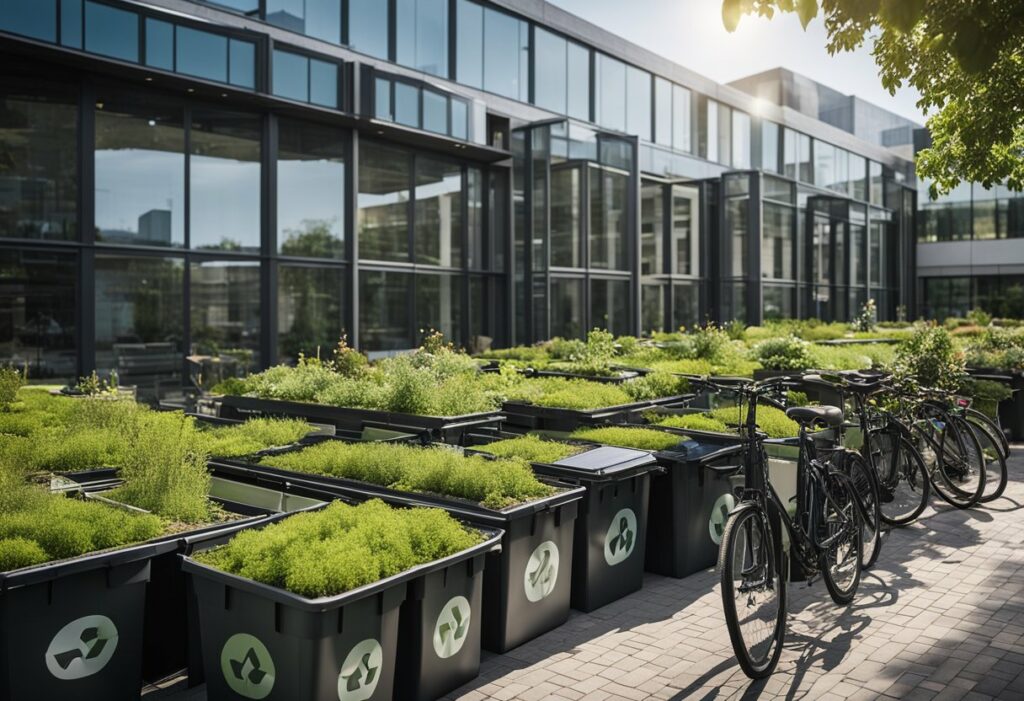Sustainable Office Building Design: Creating an Eco-Friendly Workplace
Sustainable office building design is a growing trend in the architecture and construction industry. It seeks to create structures that are eco-friendly and have a minimal environmental impact. The design process involves taking into account the building’s energy consumption, water usage, waste management, and the use of sustainable materials.
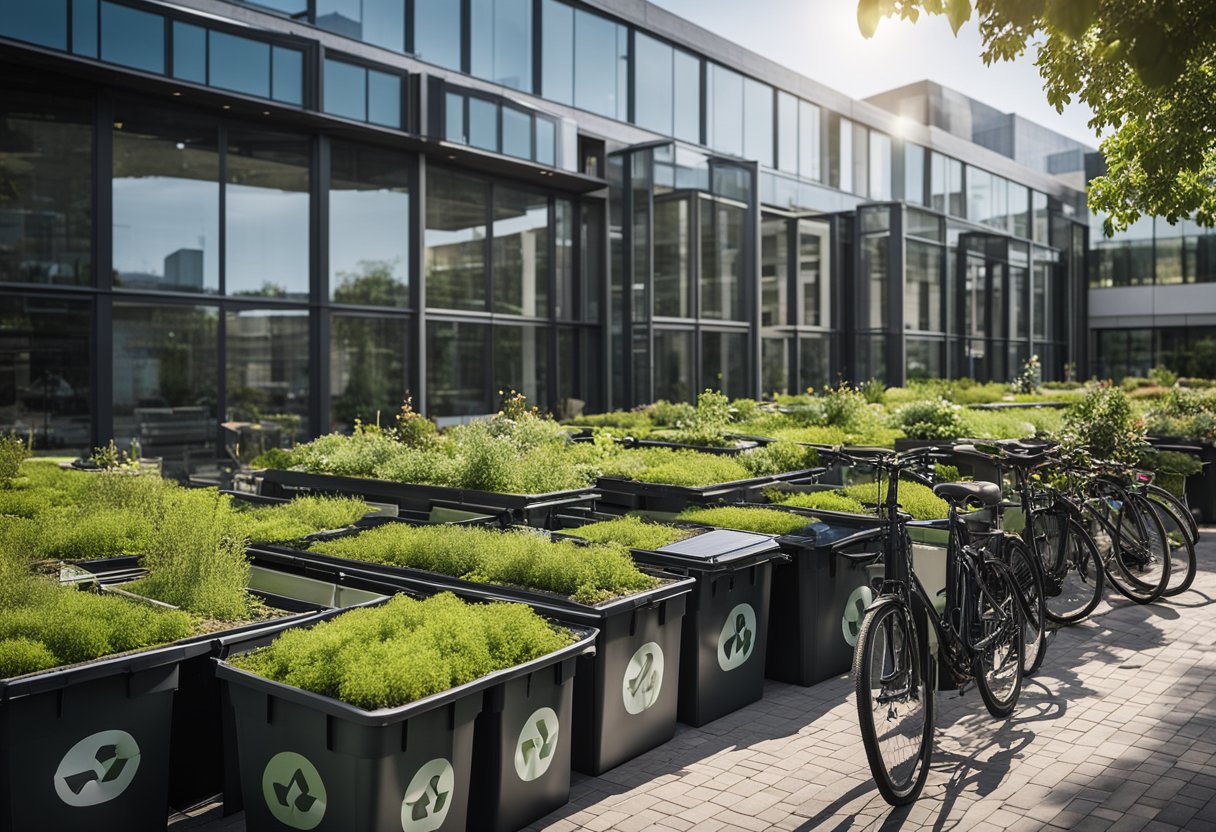
Sustainability is not only beneficial for the environment, but it also has economic and social advantages. A sustainable office building can reduce energy costs, improve employee productivity and well-being, and increase the value of the property. It is a smart investment that can save money in the long run, as well as contribute to a healthier planet.
Designing a sustainable office building requires careful planning and consideration of core principles. These principles include energy efficiency, water conservation, waste reduction, and the use of sustainable materials. By incorporating these principles into the design process, architects and builders can create structures that are not only environmentally friendly but also promote well-being and productivity. In the following sections, we will explore these principles in more detail and provide practical design strategies for creating a sustainable office building.
Key Takeaways
- Sustainable office building design seeks to create eco-friendly structures with minimal environmental impact.
- Sustainability has economic and social benefits, including reduced energy costs and improved employee well-being and productivity.
- Core principles of sustainable office design include energy efficiency, water conservation, waste reduction, and the use of sustainable materials.
Core Principles of Sustainable Office Design
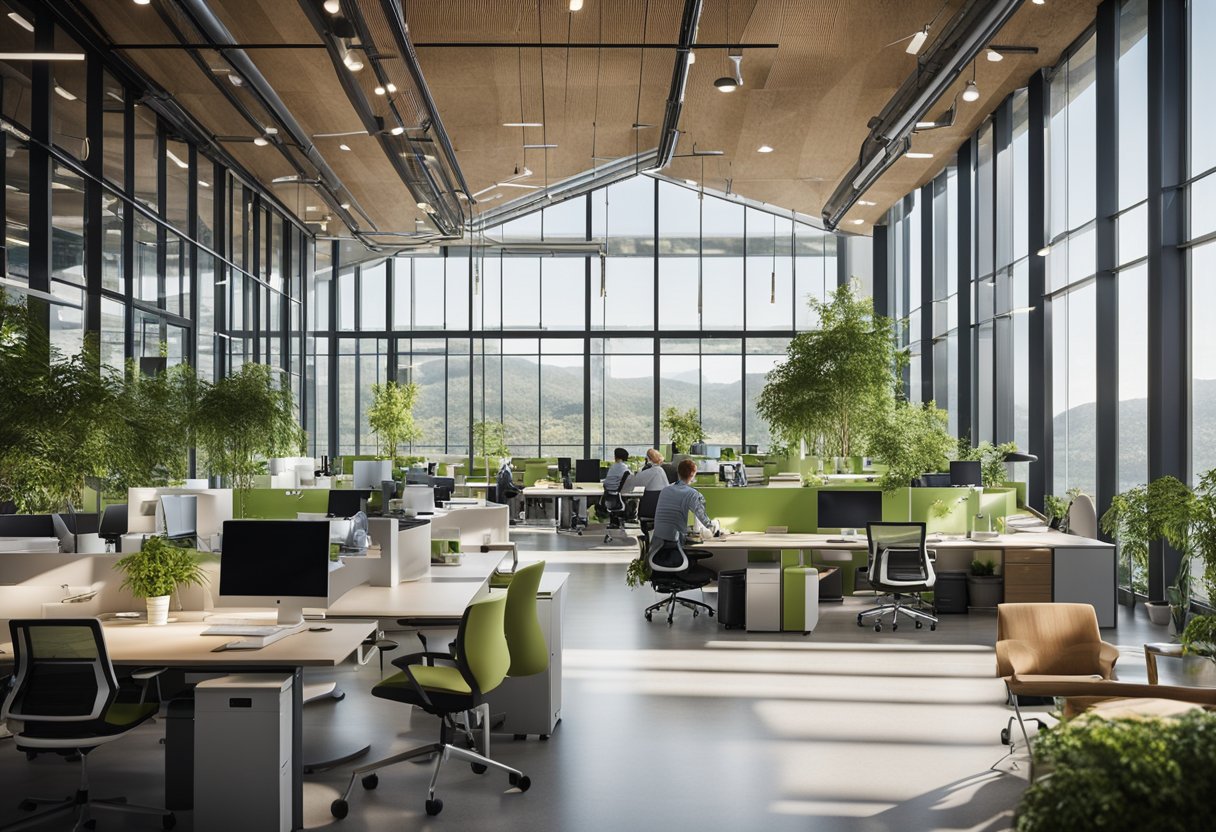
When designing a sustainable office building, there are several core principles that you should keep in mind. These principles include energy efficiency and renewable sources, materials and resources, and indoor environmental quality. By implementing these principles, you can create a green and eco-friendly workspace that is healthy for both the environment and your employees.
Energy Efficiency and Renewable Sources
One of the most important principles of sustainable office design is energy efficiency. This involves reducing energy consumption and using renewable sources of energy such as solar panels. By reducing your energy consumption, you can lower your carbon footprint and save money on energy bills.
To achieve energy efficiency, you can use insulation to reduce heat loss, install energy-efficient lighting and appliances, and use renewable energy sources such as solar panels. You can also consider using green energy suppliers to power your office.
Materials and Resources
Another important principle of sustainable office design is the use of sustainable materials and resources. This involves using eco-friendly materials such as bamboo, natural materials, and recycled materials. By using sustainable materials, you can reduce waste and lower your environmental impact.
To achieve this, you can use materials that are easy to recycle, such as plastics and paper. You can also use materials that are sourced locally to reduce transportation costs and emissions.
Indoor Environmental Quality
Indoor environmental quality is also an important principle of sustainable office design. This involves creating a healthy and comfortable workspace for your employees. You can achieve this by using natural light and ventilation, incorporating plants and biophilic elements, and using low-emission materials.
By creating a healthy and comfortable workspace, you can improve the productivity and wellbeing of your employees. This can also help to reduce absenteeism and staff turnover.
Overall, sustainable office design involves using strategies and construction techniques that are environmentally friendly and energy-efficient. By implementing these principles, you can create a workspace that is healthy for both the environment and your employees.
Design Strategies for Office Well-Being and Productivity
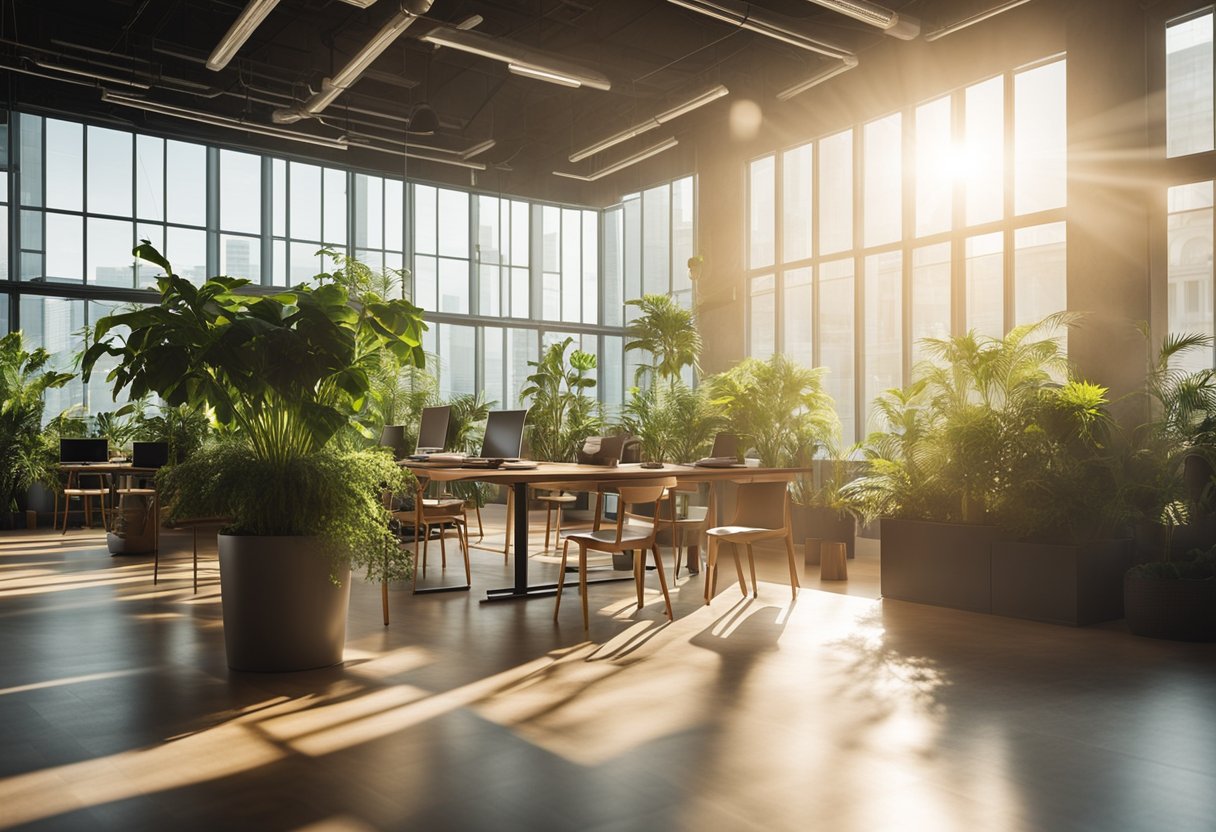
Designing an office space that promotes well-being and productivity is a crucial aspect of sustainable office building design. Here are some design strategies that can help you achieve a space that is both sustainable and conducive to employee well-being and productivity.
Biophilic Design and Natural Elements
Biophilic design and natural elements can have a significant impact on people’s mood and mental health, which in turn can boost productivity. Incorporating plant life, natural lighting, and views of nature can help reduce stress and increase creativity. For example, the Genzyme Center in Cambridge, Massachusetts, uses a biophilic design that includes a green roof, a courtyard, and a central atrium filled with plants.
Smart Technology and Automation
Smart technology and automation can also play a vital role in sustainable office building design. Sensors and energy-efficient appliances can help save energy and reduce waste, while also providing valuable information about how the office space is being used. For example, sensors can detect when a room is empty and automatically turn off the lights and adjust the temperature, saving energy and reducing costs.
Flexible Spaces and Sustainable Furnishings
Flexible spaces and sustainable furnishings can also contribute to employee well-being and productivity. Providing employees with a variety of spaces to work, collaborate, and relax can help reduce stress and increase creativity. Sustainable furnishings made from eco-friendly materials can also add value to the office space while reducing its environmental impact. For example, using office furniture made from recycled materials or sustainably sourced wood can help reduce waste and promote sustainable practices.
Incorporating these design strategies into your office space can help create a sustainable and productive environment for your employees. By promoting well-being and productivity, you can increase the value of your office space while also contributing to a greener future.
Frequently Asked Questions
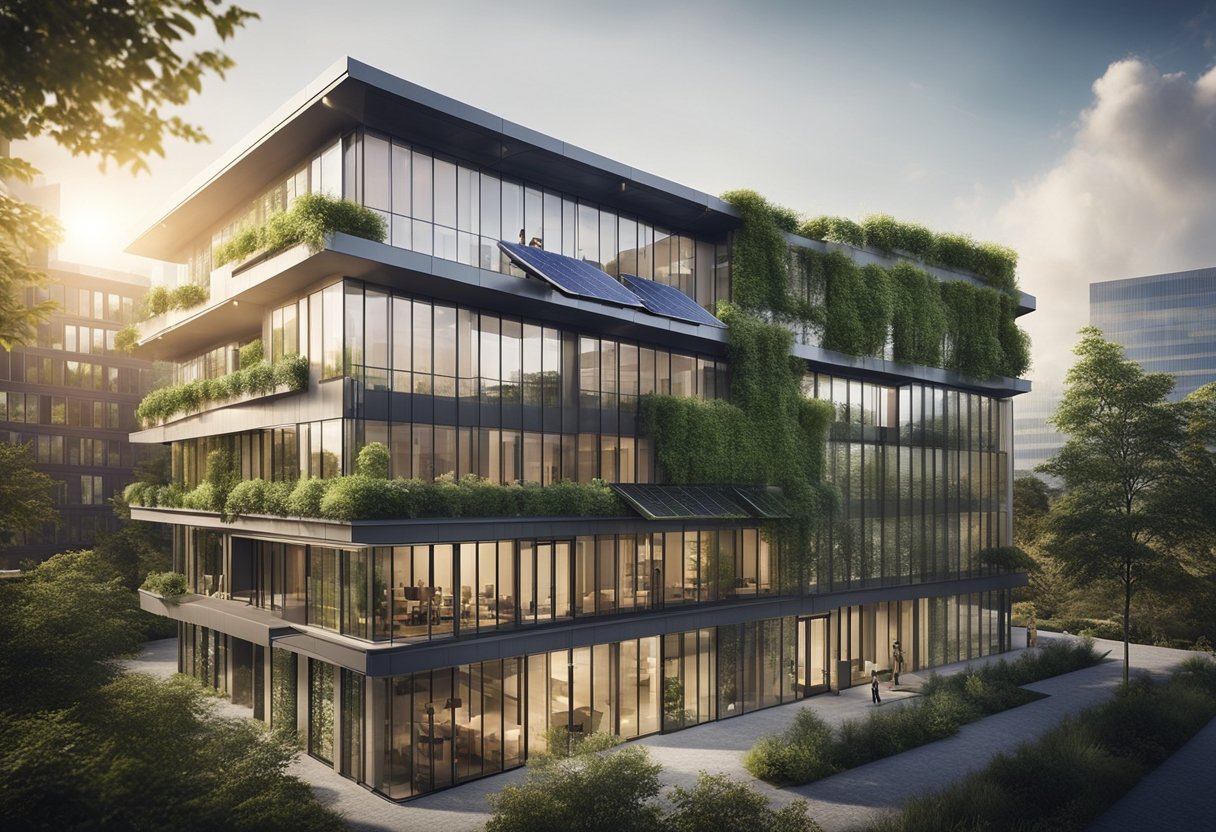
What are the top strategies for enhancing energy efficiency in office buildings?
There are many strategies for enhancing energy efficiency in office buildings. One of the most effective strategies is to use energy-efficient lighting systems, such as LED lights. Another strategy is to install smart thermostats that can automatically adjust the temperature based on occupancy and time of day. You can also improve insulation and air sealing to reduce energy loss, and use energy-efficient appliances and equipment.
How can we integrate renewable energy sources into office building designs?
There are many ways to integrate renewable energy sources into office building designs. Installing solar panels on the roof is one of the most common ways to generate renewable energy. You can also use wind turbines or geothermal systems to generate energy. It is important to work with an experienced architect and engineer to ensure that the building is designed to accommodate renewable energy systems.
What innovative materials can be used to improve the sustainability of office structures?
There are many innovative materials that can be used to improve the sustainability of office structures. Some examples include recycled steel, bamboo, and engineered wood products. These materials are renewable, durable, and can be used to create attractive and functional office spaces.
How does biophilic design contribute to a sustainable office environment?
Biophilic design is an approach to building design that incorporates natural elements, such as plants and water features, into the building environment. This approach has been shown to improve air quality, reduce stress, and increase productivity. Biophilic design can also help to reduce energy consumption by improving natural ventilation and reducing the need for artificial lighting.
What are the best practices for water conservation in office buildings?
Water conservation is an important aspect of sustainable office building design. Some of the best practices for water conservation include installing low-flow toilets and faucets, using drought-tolerant landscaping, and recycling greywater for non-potable uses. It is also important to monitor water usage and identify areas where water can be conserved.
Could you share some success stories of sustainable office buildings that have reduced their carbon footprint?
There are many success stories of sustainable office buildings that have reduced their carbon footprint. One example is the Bullitt Center in Seattle, which is designed to be a net-zero energy building. Another example is the Edge Building in Amsterdam, which uses a combination of solar panels, wind turbines, and geothermal systems to generate energy. These buildings demonstrate that sustainable building design can be both practical and attractive.

